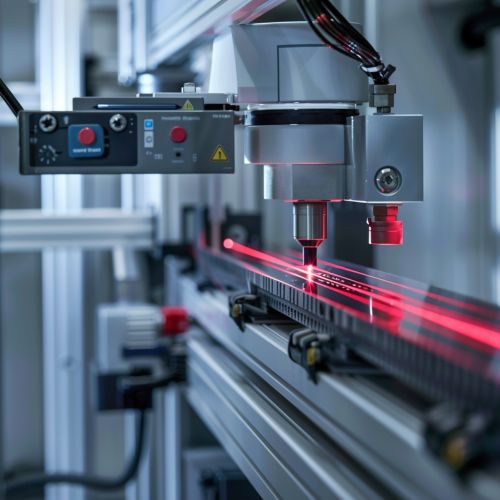Laser Sensors: Difference between revisions
(Created page with "== Introduction == A laser sensor is a type of non-contact technology that uses laser radiation to measure various parameters. Laser sensors are widely used in many industries, including manufacturing, robotics, and aerospace, due to their high accuracy and ability to function in challenging environments. <div class='only_on_desktop image-preview'><div class='image-preview-loader'></div></div><div class='only_on_mobile image-preview'><div class='image-...") |
No edit summary |
||
| Line 3: | Line 3: | ||
A [[Laser Sensor|laser sensor]] is a type of non-contact technology that uses laser radiation to measure various parameters. Laser sensors are widely used in many industries, including manufacturing, robotics, and aerospace, due to their high accuracy and ability to function in challenging environments. | A [[Laser Sensor|laser sensor]] is a type of non-contact technology that uses laser radiation to measure various parameters. Laser sensors are widely used in many industries, including manufacturing, robotics, and aerospace, due to their high accuracy and ability to function in challenging environments. | ||
[[Image:Detail-77771.jpg|thumb|center|A laser sensor mounted on a machine, emitting a red laser beam towards a target.]] | |||
== Principle of Operation == | == Principle of Operation == | ||
Revision as of 18:19, 7 May 2024
Introduction
A laser sensor is a type of non-contact technology that uses laser radiation to measure various parameters. Laser sensors are widely used in many industries, including manufacturing, robotics, and aerospace, due to their high accuracy and ability to function in challenging environments.

Principle of Operation
Laser sensors operate on the principle of laser technology. A laser is a device that emits light through a process of optical amplification based on the stimulated emission of electromagnetic radiation. In a laser sensor, a laser beam is emitted towards a target. The beam is then reflected back to the sensor, and the time it takes for the beam to return is measured. This time is then used to calculate the distance to the target, based on the speed of light.
Types of Laser Sensors
There are several types of laser sensors, each with its unique characteristics and applications. These include:
Displacement Laser Sensors
Displacement laser sensors are used to measure the distance or position of a target. They are commonly used in industrial applications for quality control, automation, and process control.
Velocity Laser Sensors
Velocity laser sensors are used to measure the speed of a moving target. They are often used in traffic monitoring and vehicle speed detection.
Proximity Laser Sensors
Proximity laser sensors are used to detect the presence or absence of a target. They are commonly used in automation and robotics for object detection and avoidance.
Applications of Laser Sensors
Laser sensors have a wide range of applications due to their high accuracy, reliability, and versatility.
Manufacturing
In manufacturing, laser sensors are used for quality control and process automation. They can measure the dimensions of parts, detect defects, and monitor the position of tools and components.
Robotics
In robotics, laser sensors are used for navigation and object detection. They can help a robot to avoid obstacles, navigate through an environment, and perform tasks with high precision.
Aerospace
In the aerospace industry, laser sensors are used for altitude measurement, terrain mapping, and obstacle detection. They can help an aircraft to maintain a safe altitude, create detailed maps of the terrain, and avoid obstacles during flight.
Advantages and Disadvantages of Laser Sensors
Like any technology, laser sensors have their advantages and disadvantages.
Advantages
Laser sensors offer high accuracy and precision, making them suitable for applications that require precise measurements. They are non-contact, meaning they can measure without physically touching the target, reducing the risk of damage or contamination. They can also function in challenging environments, such as high temperatures or harsh chemicals.
Disadvantages
However, laser sensors can be affected by the surface properties of the target, such as color, reflectivity, and texture. They can also be affected by environmental conditions, such as dust, fog, and light levels. Additionally, laser sensors can be more expensive than other types of sensors.
Future of Laser Sensors
The future of laser sensors is promising, with advancements in technology leading to improved accuracy, reliability, and versatility. Developments in laser technology, such as the advent of quantum cascade lasers, are expected to open up new applications for laser sensors. Additionally, the increasing adoption of automation and robotics in various industries is likely to drive the demand for laser sensors.
